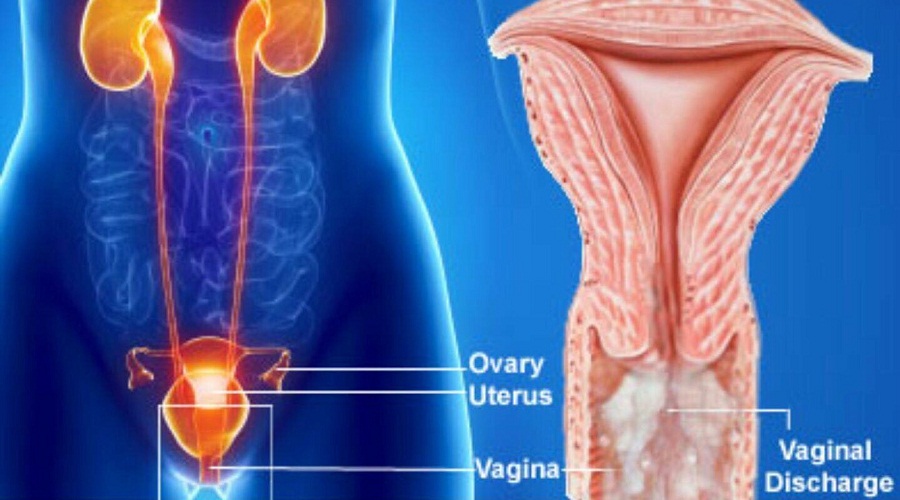


Vaginal discharge serves an important housekeeping function in the female reproductive system. Fluid made by glands inside the vagina and cervixcarries away dead cells and bacteria. This keeps the vaginaclean and helps prevent infection.
Most of the time, vaginal discharge is perfectly normal. The amount can vary, as can odor and hue (its color can range from clear to a milky white-ish), depending on the time in your menstrual cycle. For example, there will be more discharge if you are ovulating, breastfeeding, or are sexually aroused. The smell may be different if you are pregnant or you haven't been diligent about your personal hygiene.
None of those changes is cause for alarm. However, if the color, smell, or consistency seems significantly unusual, especially if it accompanied by vaginal itching or burning, you could be noticing an infection or other condition.
Any change in the vagina's balance of normal bacteria can affect the smell, color, or discharge texture. These are a few of the things that can upset that balance:
Even when you don't have your period, it is normal to have a certain amount of discharge from your vagina. This discharge actually helps keep the vagina clean. The name for this normal discharge is leukorrhea (lu-ker-EA). Leukorrhea is clear or white and has no odor. It is normal for your body to produce a small amount (about a teaspoon) of leukorrhea per day. During the middle of your menstrual cycle (when eggs are released during ovulation) you may notice that the discharge becomes thinner and stretchy, like the whites of an egg. Toward the end of your cycle, closer to when you actually get your period, your discharge may be stickier.
Have your doctor check you out if you think you may be having discharge that is not normal (abnormal). Abnormal discharge can mean you are sick with an infection or disease that needs treatment to go away. You may not even realize you are sick. It is very important to tell an adult and to make an appointment with a doctor if you notice any of the following:
Any discharge accompanied by itching, irritation, unpleasant odor, or burning with urination
An increase in discharge that isn't normal for you
Thick, white discharge
Thin, gray discharge
Mucus and pus mixed in with discharge
Frothy yellow-green discharge
Cottage cheese-like discharge
Paracetamol belongs to a group of medicines called simple analgesics and helps alleviate mild-moderate pain. Taking an anti-inflammatory either in combination or instead of is sometimes recommended. Codeine is a stronger pain reliever and blocks pain signals from nerves in your body. It can be used alone or in combination with Paracetamol and anti-inflammatories. ALWAYS seek professional advice.